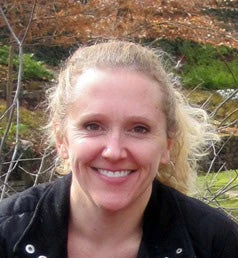We finished posting this year’s series of blog posts from PhD students on the job market, and so thought we’d take a quick look back, as well as link to all the posts in one place so we have them for easy reference in future years.
The numbers
This year we received 30 submissions before our deadline. This was down quite a bit from the 48 submissions we received last year, and the 42 submissions received in 2019, and made us wonder whether the overall supply of development candidates on the market is down this year, or whether just fewer were interested in blogging their papers. John Cawley of the AEA job market committee recently tweeted that overall new job candidate accounts on JOE were 2.8% lower this year than in 2020, and 17.8% lower than in 2019. We also received fewer (but still lots) of job applications to the Development Research Group. So, our sense is that there are likely fewer development candidates, especially ones doing fieldwork or impact evaluations on the market this year due to mobility restrictions, but we may also just be less popular.
The 30 submissions came from 18 males and 12 females, at 22 different universities, located in the U.S., U.K., Canada and Italy. So, we need to do a better job getting the word out to students at other universities both in Europe and elsewhere in the world. The main methods used were difference-in-differences (8 papers), RCTs/lab-in-the-field experiments (7 papers), IV (6 papers), RDD (4 papers), and then a smattering of structural models, panel models, or hard-to-classify cases.
Out of these 30 submissions, we published 16 (53%), which is the highest acceptance rate we’ve had in the last five years and partly reflects that the quality of the submissions was very good as well as having fewer to choose between.
Key areas where we felt improvements in presentation were needed
Most submitters followed most of our guidelines and suggestions. Nevertheless, we still typically go through a round or two of suggestions and edits to help the candidates polish and clarify their blog. In addition to blogging about new work, some of the issues are ones we think could also be useful to people preparing for job interviews. The main specific issues that came up a lot this year were:
· New methods that call into account old ways of doing things are not just robustness checks to be relegated to appendices, but should often be emphasized/central: We received quite a few submissions using difference-in-differences and shift-share instruments, two areas in which there have been a lot of recent theory papers pointing out issues that can arise with the standard approaches, and offering improvements. In many of the job market papers, we found students do not engage up front with this literature, but often relegate this as part of a robustness section or appendix. Rather, we suggest that these aspects should receive more emphasize or be central to the paper. Reading the blogs, these methods were likewise a side-bar. As a specific example, when reading shift-share IV papers, we wanted people to take a stand on whether they wanted to use an approach that assumed exogenous shares or exogenous shifts, what this meant for the effective amount of variation and inference, and what justified this assumption. As a side note, looking at the larger set of job market papers in applications through JOE, it is clear that the TWFE DD revolution has not percolated as well to other fields in economics, such as trade or macro.
· Too much focus on signs and significance, and not enough on magnitudes and interpreting magnitudes: this was one of the points we noted also last year, and continues to be the case. A lot of the summaries were of the nature “intervention X was able to increase school completion by disadvantaged students, especially for girls” or “policy X had the unintended consequence of actually decreasing outcome Y”. But often it was not clear how big an effect this was in absolute terms, and how the magnitude compares to the scale of the problem, to the effects of other policies, etc. That is, telling us that it was a two-percentage-point increase in school enrolment for underprivileged boys is a start, but how much of the gap does this close, how does this compare to other approaches, etc.
· Need for succinct and clear text on the main research question, the intervention or policy to which it relates, and definitions of key outcomes. A lot of the suggested edits were helping people to sharpen these areas. Often the word limits were given as an explanation for lack of clarity, but we think this is where the advice on avoiding a lot of general throat-clearing/too much big picture motivating and getting clearly to the point is useful both for blog posts and for the job market elevator pitch. Indeed, it may help to sit back and ask yourself, is my main storyline clear? Have I left aside the extraneous details (no matter how much work such details reflect)? Another option is to run the storyline by your parents (especially if they are not economists).
We thank again all the candidates that submitted blogs and wish everyone the best on the job market.
Here is the full set of posts:
1. The Role of the Financial Sector in Improving Households’ Health: Guest Post by Kim Fe Cramer
11. Hindu-Muslim relations in an Indian factory: Guest post by Arkadev Ghosh
12. Family First, State Last: Bureaucratic Nepotism in a Modern State. Guest post by Juan Felipe Riaño
14. Are parents' investments in education distorted by inaccurate beliefs? Guest Post by Tianqi Gan






Join the Conversation